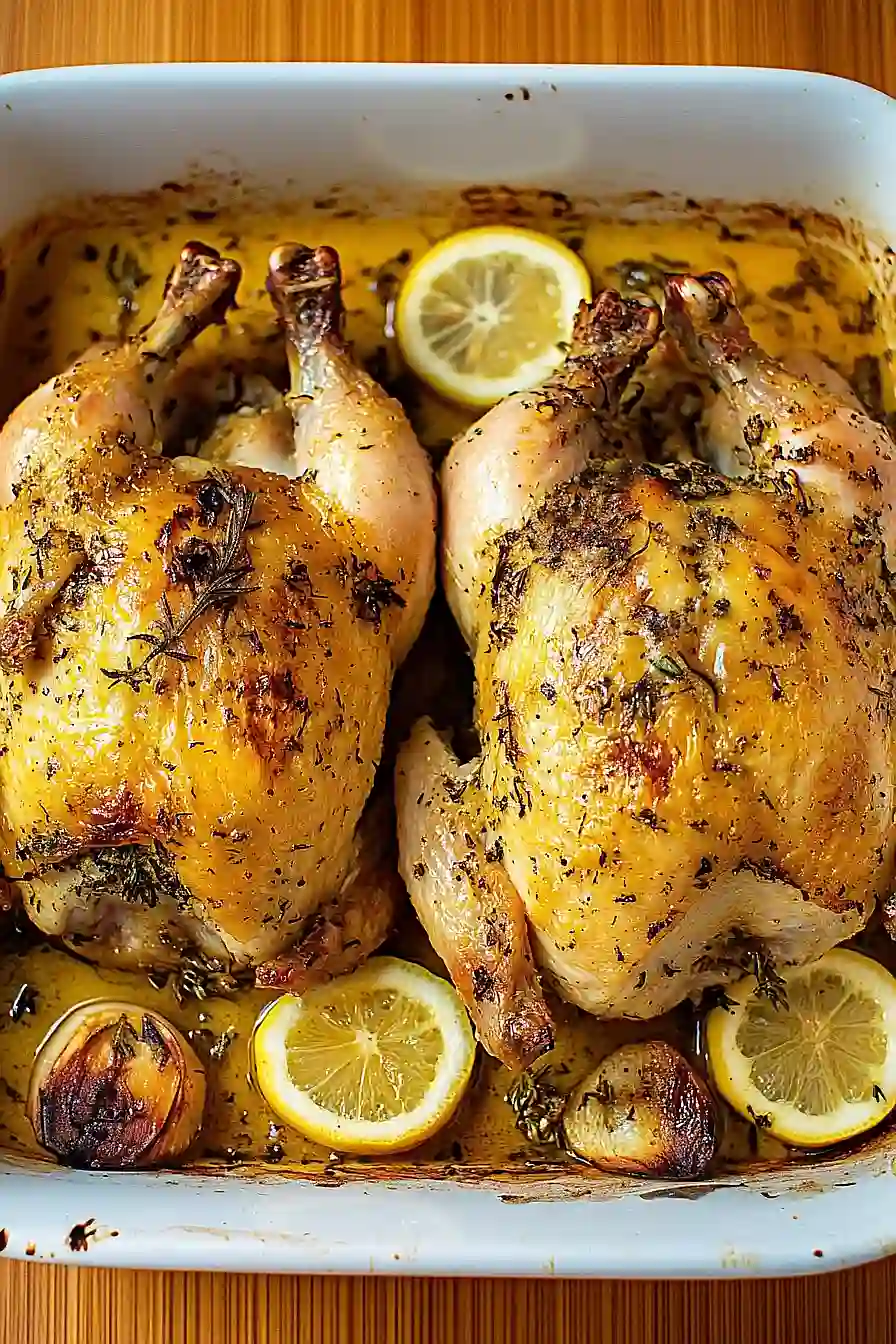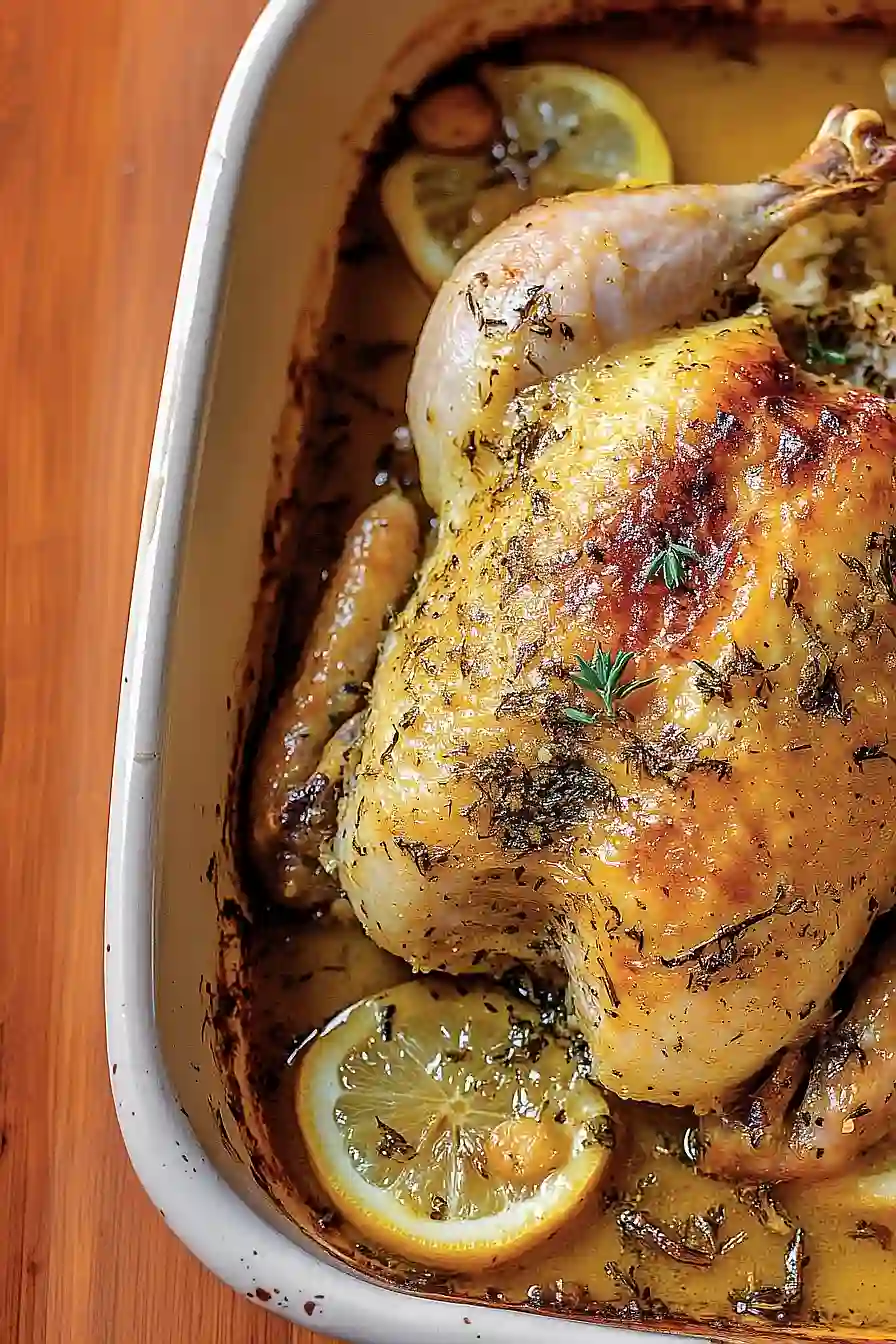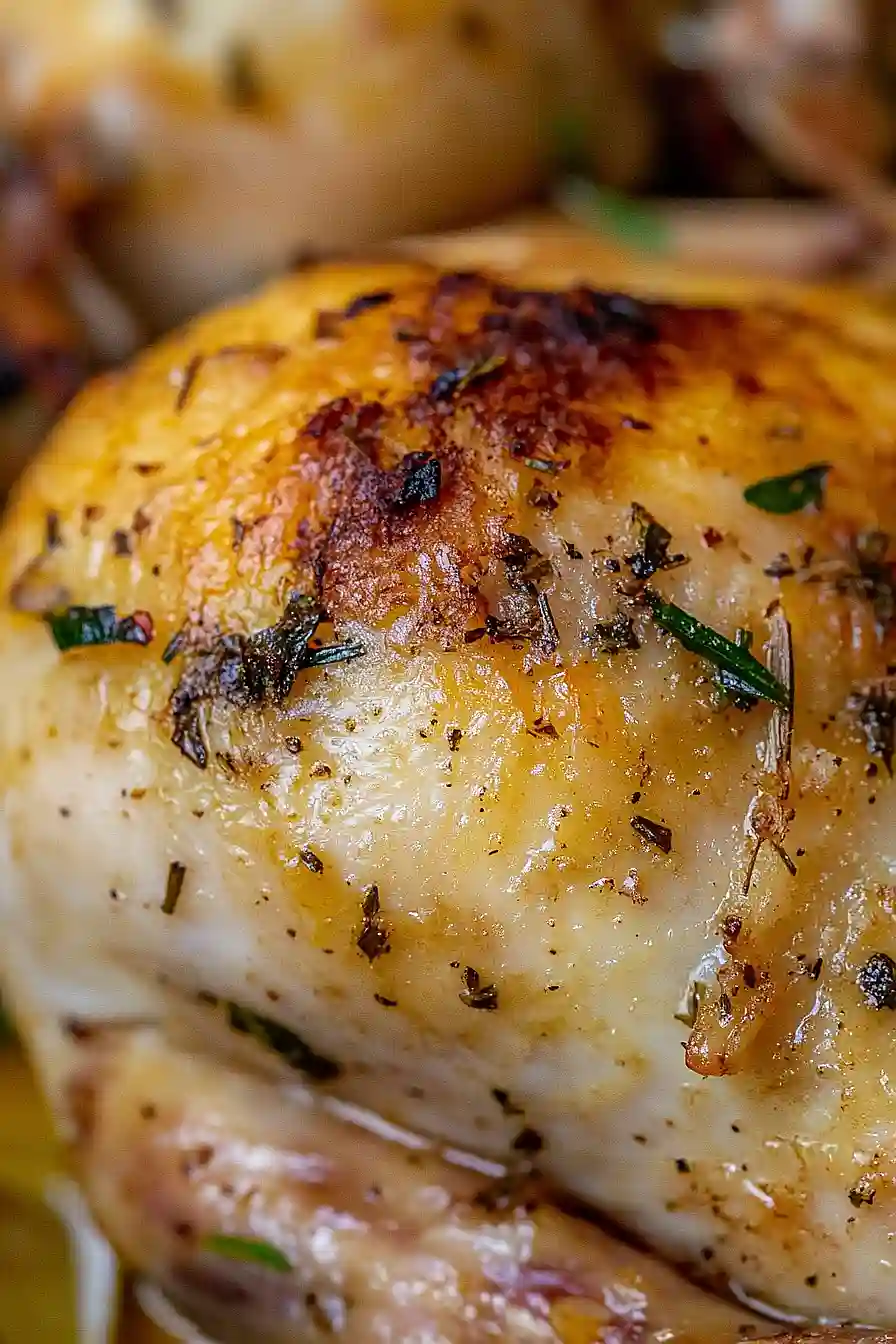I’ve always enjoyed finding new ways to make dinner feel special, especially when following a keto diet. These little Cornish hens remind me of the first time I cooked a whole bird – they’re like miniature turkeys, but so much easier to handle! Since starting keto, I’ve learned that you don’t need breading or sugary glazes to make a really good bird.
These keto Cornish hens have become my go-to when I want to impress guests without spending hours in the kitchen. I usually prep them while my kids are doing homework, and the whole house fills with the most amazing smell. The best part? Each person gets their own little bird, which makes everyone feel like they’re getting something extra special.
Don’t let cooking a whole bird intimidate you – if you can roast a chicken, you can definitely handle these little guys. And trust me, once you try this keto version, you’ll wonder why you haven’t been making them all along.
Why You’ll Love These Cornish Hens
- Keto-friendly main dish – With zero carbs and plenty of protein, these Cornish hens fit perfectly into your keto lifestyle while feeling fancy and special.
- Impressive presentation – Each person gets their own perfectly seasoned bird, making this an ideal choice for dinner parties or special occasions without any complicated techniques.
- Rich in flavor – The combination of fresh herbs, garlic, and lemon creates an aromatic and delicious meal that’s way more exciting than regular chicken.
- Simple ingredients – You only need a handful of basic ingredients you can find at any grocery store, and most are probably already in your kitchen.
- Meal prep friendly – These little birds reheat beautifully, making them perfect for preparing ahead or enjoying as leftovers throughout the week.
What Kind of Cornish Game Hens Should I Use?
When shopping for Cornish game hens, you’ll typically find them in the frozen section of your grocery store, though some markets carry fresh ones too. These little birds usually weigh between 1 to 2 pounds each, and either fresh or frozen will work great for this recipe. If you’re using frozen Cornish hens, just make sure to thaw them completely in the refrigerator for 24-48 hours before cooking. Look for birds that are plump with pinkish-colored skin and no visible freezer burn. While they’re actually young chickens (not game birds), Cornish hens are more tender and a bit more flavorful than regular chicken, making them perfect for special occasions or when you want individual servings.
Options for Substitutions
This keto recipe is pretty straightforward, but here are some helpful substitutions if you need them:
- Cornish game hens: If you can’t find Cornish hens, you can use small chickens (poussins) or even chicken quarters, though you’ll need to adjust cooking time accordingly – longer for regular chicken, shorter for quarters.
- Fresh herbs: No fresh herbs? Use dried ones instead – just remember to use 1/3 of the amount since dried herbs are more concentrated. For stuffing, you can use dried bay leaves as an alternative.
- Italian Herb Seasoning: Make your own by mixing equal parts dried basil, oregano, thyme, and rosemary. Or use Herbs de Provence or Mediterranean seasoning blend.
- Lemons: Limes work well too, or you can use orange slices for a slightly sweeter note. If using oranges, add a splash of white wine vinegar to maintain the acidic balance.
- Butter: Any keto-friendly fat works here – try ghee, duck fat, or olive oil. Each will give a slightly different but equally good flavor.
- Fresh garlic: If you’re not up for peeling 20 cloves, you can use 2-3 tablespoons of pre-minced garlic, though fresh really does work best in this recipe.
Watch Out for These Mistakes While Roasting
The biggest challenge when cooking Cornish hens is preventing them from drying out – the key is to baste them every 15-20 minutes with the pan juices to keep the meat moist and flavorful. Another common mistake is cooking them straight from the refrigerator, so let your hens sit at room temperature for 30 minutes before roasting, which helps them cook more evenly and maintain their juiciness. To ensure perfectly cooked birds, use a meat thermometer inserted into the thickest part of the thigh (avoiding bone) and cook until it reaches 165°F – any higher and you’ll risk tough, dry meat. For extra crispy skin, pat the hens completely dry with paper towels before seasoning, and consider rubbing softened butter under the skin, which not only adds flavor but helps achieve that golden-brown exterior everyone loves.
What to Serve With Cornish Hens?
These little birds pair perfectly with simple, low-carb side dishes that complement their rich, herb-infused flavor. A bed of roasted vegetables like Brussels sprouts, asparagus, or cauliflower works great since you can cook them right alongside the hens in the oven. For a fresh element, try a simple mixed green salad with a light lemon vinaigrette that echoes the citrus notes in the main dish. If you’re keeping it keto, consider adding some sautéed mushrooms with herbs or mashed cauliflower to soak up all those wonderful pan juices – trust me, you won’t want to waste a drop of that garlic and herb goodness!
Storage Instructions
Keep Fresh: Got leftover Cornish hens? Place them in an airtight container and pop them in the fridge within two hours of cooking. They’ll stay good for 3-4 days, perfect for creating quick meals throughout the week. Remember to keep all those yummy herbs and garlic with the meat to maintain the flavor.
Freeze: These little birds freeze really well! Wrap each hen tightly in aluminum foil or freezer paper, then place in a freezer bag with the air squeezed out. They’ll keep their quality for up to 4 months in the freezer. Just remember to label them with the date!
Warm Up: To bring back that fresh-from-the-oven taste, thaw your frozen hens in the fridge overnight. Then warm them in a 325°F oven, covered with foil, for about 20-25 minutes or until heated through. Add a splash of broth or butter to keep the meat moist. If reheating from the fridge, 15-20 minutes should do the trick.
| Preparation Time | 10-15 minutes |
| Cooking Time | 50-60 minutes |
| Total Time | 60-75 minutes |
| Level of Difficulty | Medium |
Estimated Nutrition
Estimated nutrition for the whole recipe (without optional ingredients):
- Calories: 1500-1700
- Protein: 140-160 g
- Fat: 90-100 g
- Carbohydrates: 40-50 g
Ingredients
- 4 cornish hens
- Salt and black pepper, for seasoning
- 2 lemons, cut into rounds
- 1 onion or shallot, thinly sliced
- 2 to 4 sprigs each thyme, rosemary, and sage (some minced, some left whole)
- 4 sprigs fresh rosemary, for stuffing
- 1 tbsp italian herb seasoning blend
- 1 tbsp softened butter
- 20 garlic cloves
Step 1: Prepare the Hens and Preheat Oven
- 4 Cornish hens
Preheat your oven to 450°F (232°C).
While the oven heats, pat the Cornish hens completely dry with paper towels to help achieve crisp, golden skin during roasting.
Step 2: Season the Hens
- 1 tbsp softened butter
- salt and black pepper, for seasoning
- 1 tbsp Italian herb seasoning blend
- some minced thyme, rosemary, and sage (from ‘2 to 4 sprigs each thyme, rosemary, and sage’)
Rub each Cornish hen all over with 1 tablespoon of softened butter.
Lightly season the hens with salt, black pepper, the Italian herb seasoning blend, and minced fresh herbs (from the thyme, rosemary, and sage).
I like to really work the butter under and over the skin for best flavor and moisture.
Step 3: Stuff and Aromatize the Hens
- 2 lemons, cut into rounds (slices from 1 lemon for stuffing)
- 20 garlic cloves (16 cloves for stuffing, 4 for roasting—use 4 cloves per hen for stuffing)
- whole sprigs thyme, rosemary, and sage (from ‘2 to 4 sprigs each thyme, rosemary, and sage’)
- 4 sprigs fresh rosemary, for stuffing
Into the cavity of each hen, place slices from 1 lemon, 4 garlic cloves, and whole sprigs of the fresh herbs (thyme, rosemary, and sage).
For extra aroma, stuff a sprig of fresh rosemary in each hen as well.
This infuses the meat with flavor from the inside during roasting.
Step 4: Prepare the Roasting Pan
- 2 lemons, cut into rounds (slices from second lemon for the pan)
- 1 onion or shallot, thinly sliced
- remaining 4 garlic cloves (from ’20 garlic cloves’)
Line your baking dish, roasting pan, or Dutch oven with the slices from the remaining lemon, the thinly sliced onion or shallot, and the remaining 4 garlic cloves.
Arrange the seasoned and stuffed hens on top.
The aromatics will flavor both the hens and any juices that collect below.
Step 5: Roast the Hens
- stuffed and seasoned Cornish hens from Step 3
- pan aromatics from Step 4
Transfer the pan to the oven and roast for 25 minutes at 450°F.
After 25 minutes, reduce oven temperature to 350°F (177°C) and continue roasting for about 25 minutes longer, or until the Cornish hens are golden brown, the juices run clear, and a digital thermometer inserted in the thickest part of the thigh reads 170°F.
Sometimes I baste the hens once or twice with the pan juices to promote browning and keep them moist.
Step 6: Rest and Serve
When the hens reach 170°F, remove them from the oven and loosely tent them with aluminum foil.
Let the hens rest for at least 10 minutes before serving—this allows the juices to redistribute and keeps the meat tender.
For fun, serve each guest a whole hen and let them carve their own at the table!




